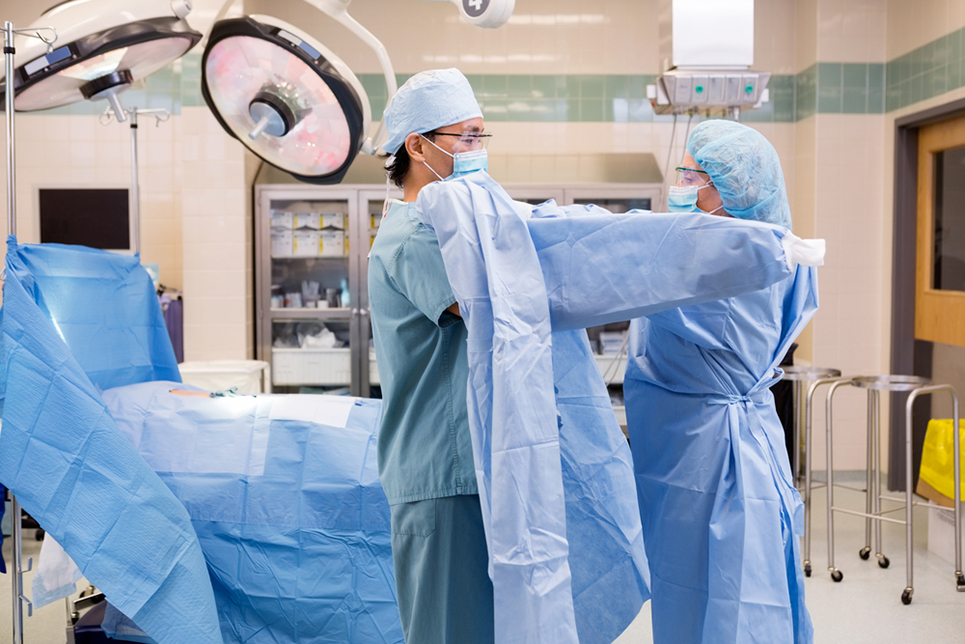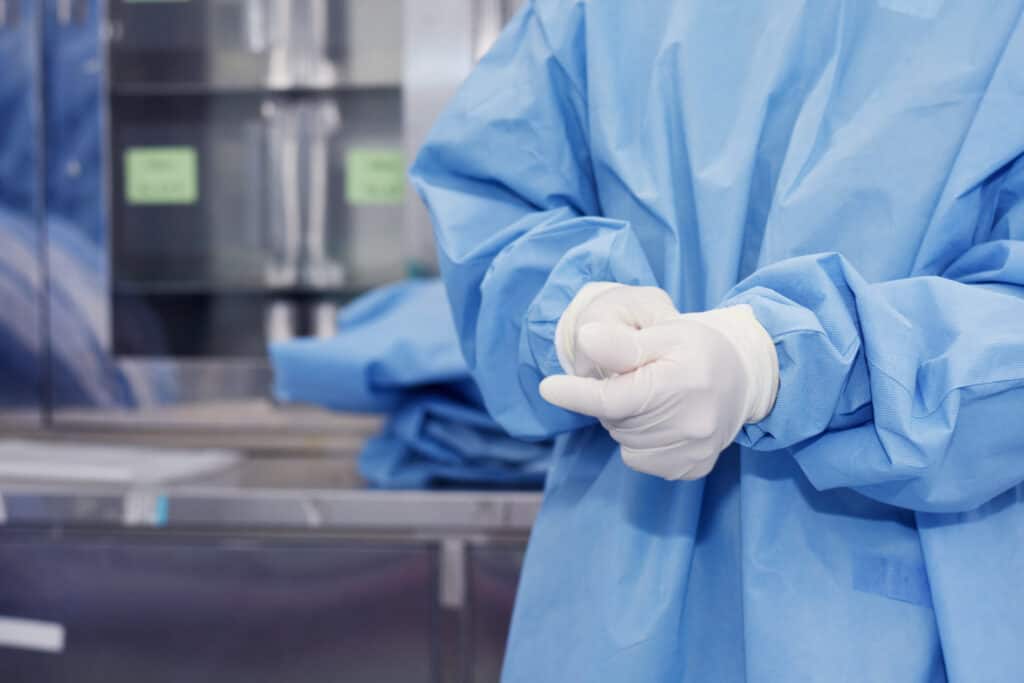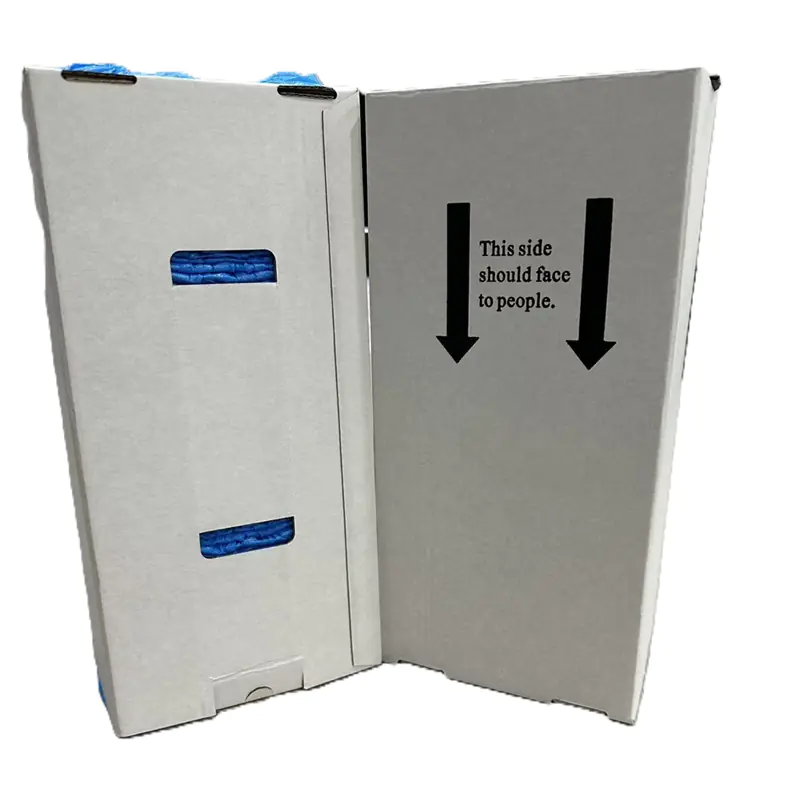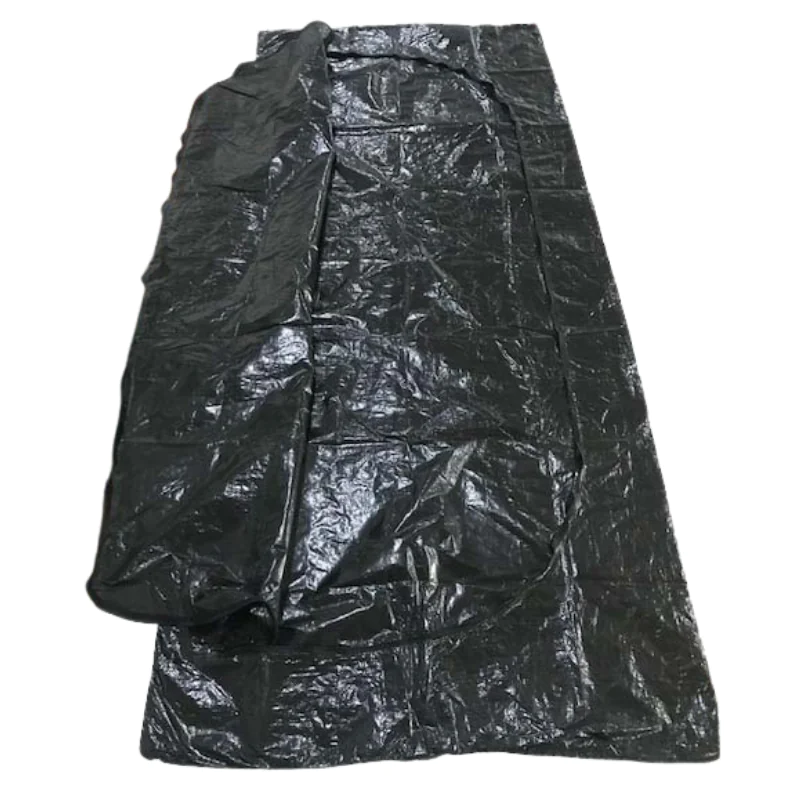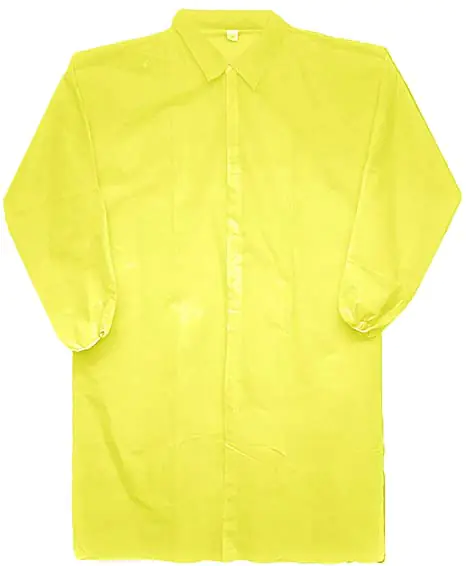A reinforced surgical gown is a blouse chirurgicale with extra reinforcement en critical zones. These zones are the chest, belly, and sleeves, where spray, splatteret fluid can hit the most. The goal is to block strike-through and keep skin and clothes dry. The base body is breathable to help comfort. The front panel and sleeves have a stronger fluid barrier. This design helps in high fluid cases and long cases. It supports clean work and infection control in the operating room. It is jetable, simple to wear, and easy to toss after use.
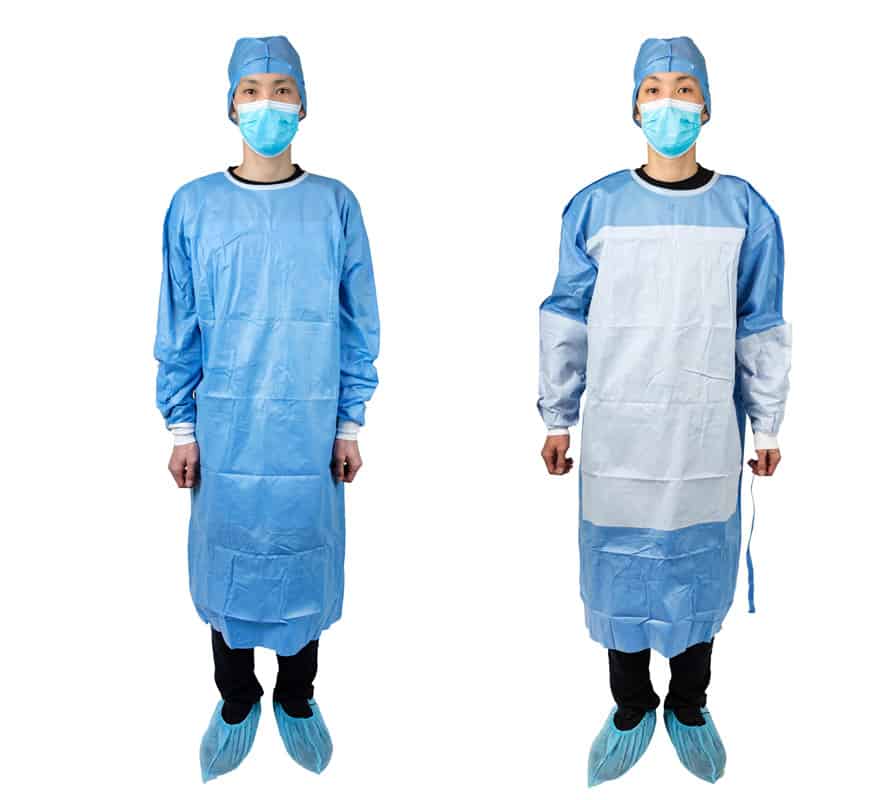
The base fabric is often SMS ou SMMS non tissé made from PP. It is light, low lint, and strong. The reinforced parts use PP+PE laminated film or microporous film to make an impervious shield. Seams are neat and can be ultrasonic for a tight seal. Most styles have knit cuffs for a soft wrist fit. A hook and loop neck lets the neck close adjust fast. Waist ties keep the gown in place and help the fit. The back is open for airflow and is easy to close with ties. The film in the front and sleeves guards the critical zone without adding too much weight.
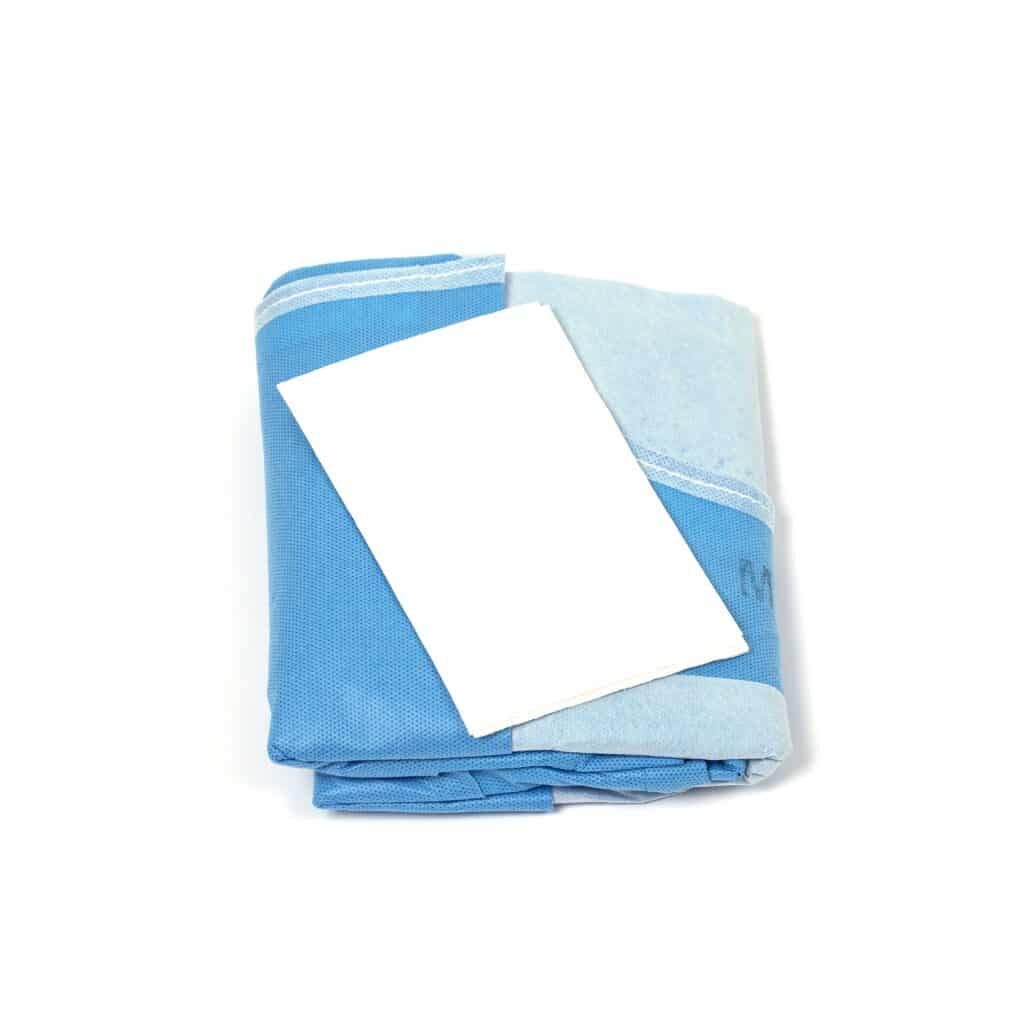
You can pick sterile ou non-sterile. A sterile reinforced surgical gown comes in a clean sterile pack and is ready for the OR. A non-sterile type is good for prep, support roles, or training. Gowns come in sizes from S to XXL so staff can move well. Many have a raglan sleeve cut for easy reach. The inside is soft to the touch, and the outside is smooth. The design aims to be low lint, so less dust falls on tools or fields. The pack is flat to save space and makes donning et doffing simple at the door.
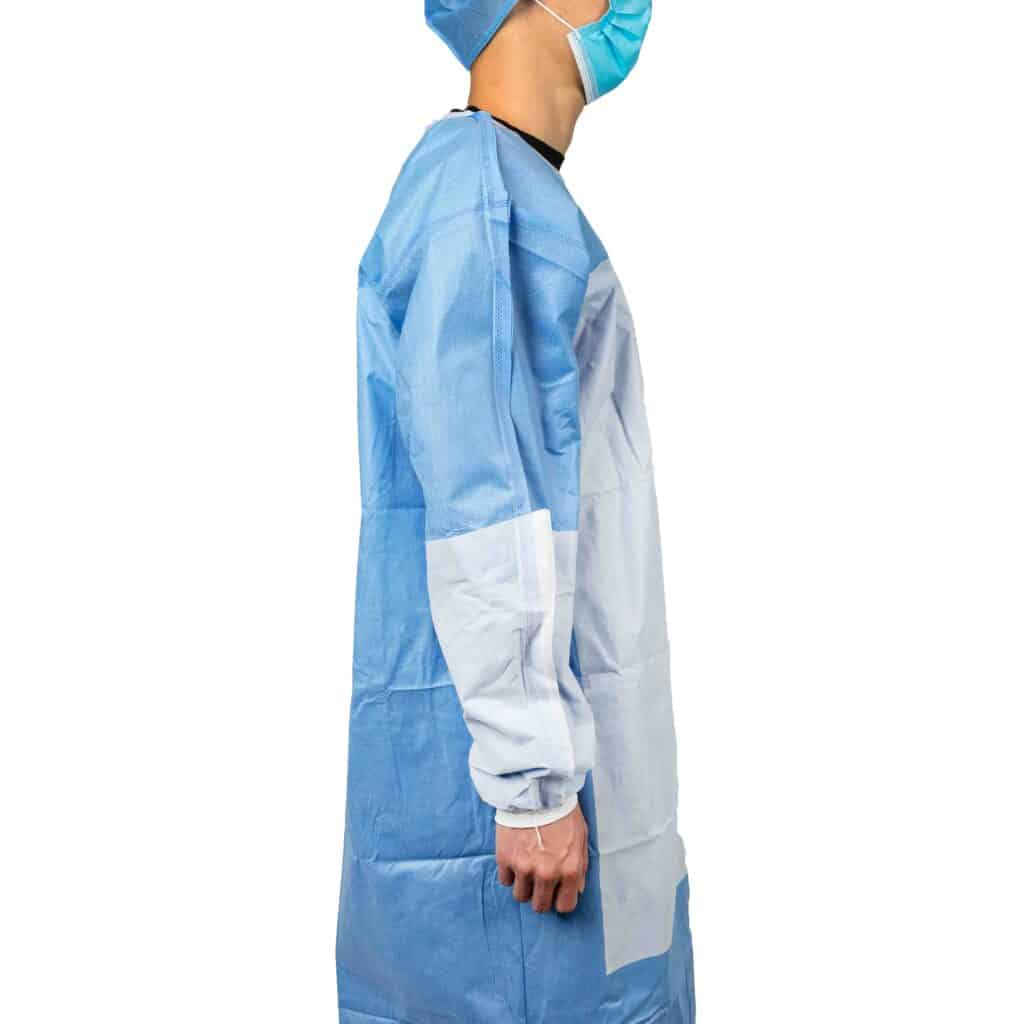
Choose a reinforced surgical gown when you expect high fluid, longer time on task, or more splash risk. Use a standard gown when the risk is low. For comfort, match breathable back panels with strong laminated fronts. Check fit at the neck, cuffset waist ties. Make sure the critical zones cover the chest and sleeve length you need. After use, remove with care and throw in the right bin. A good reinforced surgical gown gives a strong fluid barrier, helps stop strike-through, and keeps the team safe while they work.
